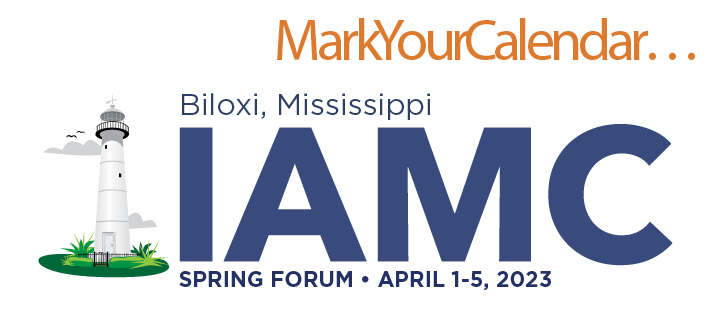From the vantage point of October 2022, it seems that the past two years of upheaval, driven by a worldwide pandemic and global supply chain disruptions, might at last be easing, albeit more slowly than anyone would wish. As I take on this excellent challenge of the IAMC chair, I have to begin by thanking past chairs Scott Cameron, Jennifer Roth and Colleen Caravati — and their work with IAMC staff — for their guidance through these trying times.
By contrast, this coming year, marked by current economic conditions and a likely threat of mild recession, will find us on more familiar territory — especially for IAMC members who have already penciled through previous downturns. Been there, done that.
But this is not to say that we’re free of disruptions. Advancing technologies are changing the way we do business. Recent carbon reduction legislation is designed to incentivize the nation’s businesses to adopt and innovate around cleaner energy sources.
A major component of the trend toward technological energy control is electric vehicles (EVs). They are — and will be — an important part of our customers’ sustainability strategies due to their zero tailpipe emissions. This will be key for all industrial practitioners who own or lease their trucks.
EVs — and the installation of charging stations — present a classic pain-to-gain scenario, all of which revolve around upfront cost and downstream benefits. In terms of the first, some potential barriers to entry include upfront costs, the expansive charging infrastructure that must be installed, a robust energy supply and routing concerns. There is also the fear of vehicles running out of power due to the distance between charging stations.
This latter consideration is especially key as an increasing number of corporate decision-makers embrace environmental, social and governance (ESG) standards — and as an increasing number of ratings agencies demand environmental performance in their analyses.
But costs and savings aside, the industry may not have a choice, as more states follow California’s lead in the requirement of zero emission vehicles (ZEVs — a term more encompassing than “EVs.”). As you probably know, legislation passed earlier this year mandates that all new cars, trucks and SUVs run on electricity or hydrogen by 2035. To be clear, Californians can keep driving gas-powered vehicles and buying used ones after 2035, but no new models would be sold in the state, a measure to phase out the older technology. At least 12 other states are weighing similar moves.
Here at Penske Transportation Solutions, we practice what we preach. Since the delivery of our first EV in 2018, we’ve been at the forefront of our industry. Plus, we’re an active participant in the Advanced Clean Transportation Expo (held this year in Long Beach, California) as a leading sponsor and thought leader.
We’re not alone. Folks like Prologis are installing EV chargers at their warehouses in select cities for tenants of the future. For them, the future is clearly now.
IAMC members, of course, got a first-hand taste of what’s ahead in terms of new technologies at the Detroit Fall Forum. The forums are famous for tackling the major issues of the day, and in that vein, I have to emphasize here the terrific presentations at the session entitled “Are You Ready for an Electric Future?”
As author William Gibson famously said, “The future is already here. It’s just not evenly distributed yet.” It won’t be too long in our future when ZEVs are the law of the land, and then this particular movement will be evenly distributed. We have to prepare for that inevitability.
With that in mind, the time to prepare is now.
Karen Shchuka
Chair, IAMC Board of Directors
